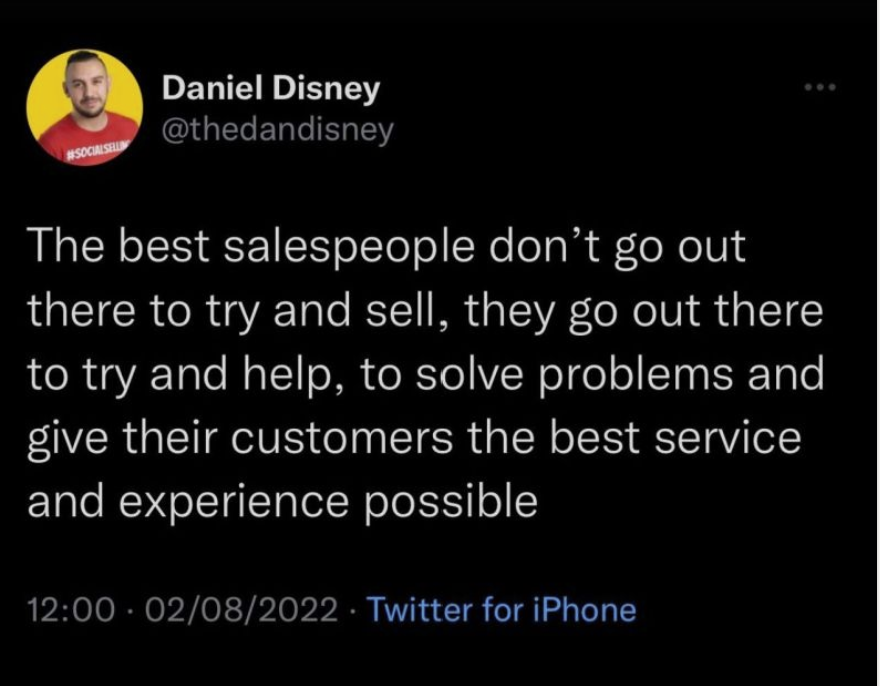
Exciting News! Outbase unveils its groundbreaking AI Assistant – your new campaign creation co-pilot. It's a smarter, faster way to reach your sales goals!



The most common objections you’ll hear from potential customers, and how you can overcome them to close sales.
Getting new customers is tough. And with every win, there’s a number of rejections, objections and disappointments that come with it.
While a “no” can come as a blow, the way you handle it is key. Objections can often be turned into conversions if you know how to react to them. In fact, knowing how to handle objections can increase your success rate by 64%.
So how do you tackle objections, and make sure you’re doing everything possible to close a sale, and bounce back effectively after rejection? Let’s dive in.
You can break down the objection-handling process into four stages:
Here’s how the process looks in action, and how you can use it to turn “I’m not sure” into “sounds good”.
Have you ever rejected someone, only to change your mind after they got defensive in response? Us neither. Doubling down is probably the worst thing you can do when you encounter a sales objection. Instead, use the unique points your customers raise and turn them into talking points.
“Is there anything in particular that you’re concerned about?”
“Are there any elements or features that you’d like me to expand upon?”
“How do you plan to use the product/service? Is there any way we could assist you to improve its utilization?”
Make sure you’re listening to exactly what the client is telling you. Note any important dates (such as contractual end dates) and other contacts such as their boss, supplier or colleagues. You’ll then have this in your arsenal for getting in touch further down the line.
After listening to the customer’s concerns, it’s important to validate their feelings and reasonings. Clearly explain that you’ve heard and understood their comments – it’ll go a long way to building trust, along with giving you valuable insight into common themes that might come up during the sales process.
“Thank you for explaining your concerns about this.”
“I completely understand your reasoning.”
“Thanks for your time, I really appreciate you taking the time to explain this to me, and can see your points.”
Almost 80% of B2B buyers aren’t looking for a sales rep. They want a trusted advisor who understands them and adds value to their business. Show authenticity and understanding, and you might just be surprised at the outcome.
You’ve listened to the concerns and communicated that you get it. Now’s the time to for your solution to shine – by addressing those concerns head-on.
At this stage, it’s crucial to ensure you’re providing solutions and options that are tailored to the concerns that have been raised to you, rather than a sales-style grab at a new opportunity. Here’s some examples:
They don’t want to be tied into a contract
“I understand that one of your main concerns is the contractual nature of this product. I’m happy to discuss with you some alternatives that may fit your needs better.”
They’re worried about budget
“I understand we’re nearing the end of the quarter, and that your budget is tied up in other departments. Would you consider a switch at the end of your contract, with a reduction in fees when joining us to smooth over the transition process?”
They’re not sure it’s the right time
“Thank you for your time, and for this information. Are you happy for me to contact you in [x time], to discuss your needs?”
They want a better deal
“Is there anything in particular that we could offer, that would increase your interest at this time?”
They’re just not sure
“Can I provide any further clarification surrounding this product or service that would make you feel more comfortable?“
“Would you like a sample, free of charge? I’d love to demonstrate to you the product’s potential within your business.”
After you’ve taken the time to carry out the previous steps, it’s time to confirm everything to the customer and await the outcome. It can go one of two ways – acceptance or rejection. You can’t win ‘em all, but if you’ve followed this process, you can be assured you’ve done everything you can.
This confirmation – positive or negative – will allow you to tailor your future prospecting to audiences that fit your ideal much more accurately.

Now you know the four step process, let’s give you some example responses you can use to the most common sales rebuttals. Don’t say we don’t treat you…
This is a very common objection, and 35% of salespeople say this is the hardest one to overcome. While it’s sometimes a genuine concern of a prospective client, it’s often used to quickly ‘dip out’ of a sale conversation. Perhaps the client doesn’t have the time, doesn’t need the product, or really, it is too expensive, and is looking for a way to quickly deal with your inquiry without being rude.
If met with this objection, try some of these responses:
“I’m happy to discuss some of our options with you to find an affordable and suitable solution for your business.”
“Many of our clients have found that the introduction of this product has positively affected their turnover. Would you like to discuss your options?”
“Our payment process is flexible and we feel that your business would be a really great fit. Are you available for a short, no-obligation discussion at any point this week?”
Introducing a new product or feature may be the last thing on someone’s mind during a busy workday. This one’s easy to deal with, though! Just remember to be polite, not a pest.
“No worries! Is there a more convenient time to talk?”
“Completely understandable. Would you like to book in some time this week for a discussion?”
“That’s no problem. My number is [x], feel free to call when you have a moment.”
By explaining the value of what you offer – while respecting your prospective client’s time – you’re showing respect towards their schedule, and leaving them with the necessary information to make an informed decision. Make sure to follow up politely in a couple days if you haven’t heard from them.
This may be true – and if your business isn’t a good fit for the prospect, it’s best for all involved to leave it there. But if your solution can address any concerns raised, be sure to point this out politely.
“Our product or feature is extremely flexible and has been used for many businesses to complete X, Y and Z. Would you like me to send you a sample or some more information?”
This one’s understandable. In the current climate, many businesses have been hit particularly hard, and if your prospective client is expressing a genuine concern, it might not be best to push sales for them.
The best response here is one of flexibility. Mark a date in your calendar to get back in touch with them at a later date, and let them know you’re available if they want to chat in the meantime.
“That’s completely understandable. Thank you very much for your time. Here are my contact details should you need me. I’ll be happy to discuss some options with you, as we think your business would be a great fit.”
“I’m sorry to hear your business is experiencing difficulties right now. Thanks for your time, and let us know if you have any questions. We’re happy to help.”
We get it, winning new clients is tough. One way to minimize the risk of rejection is to ensure you’re reaching the right people for your business.
That’s where we come in. Outbase finds your perfect audience and puts you on track to get conversions. Our B2B sales platform shows your sales results in real time and gives you the tools to manage and nurture your leads.
Explore new markets, segment data, and build campaign-ready audiences, along with building your sales process and benchmarking against industry performance stats. See how it works.